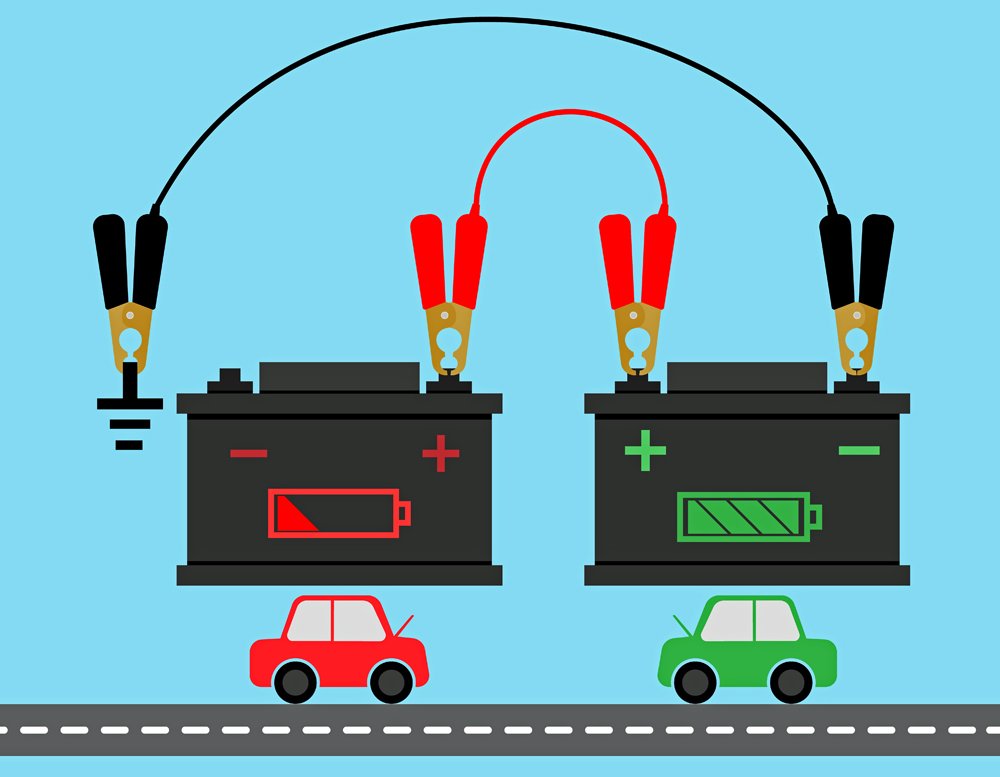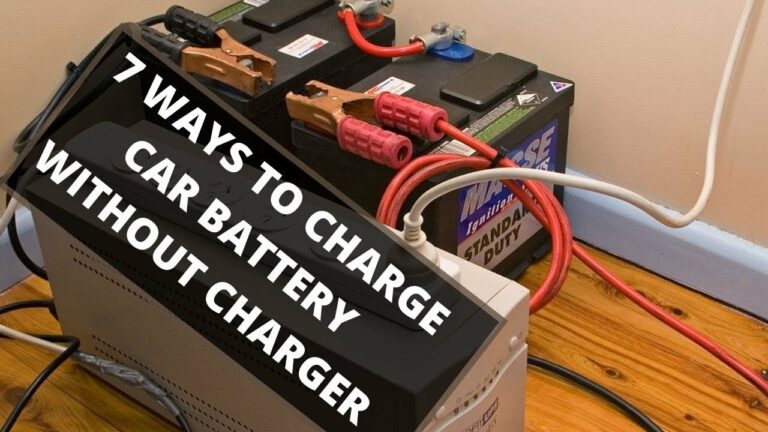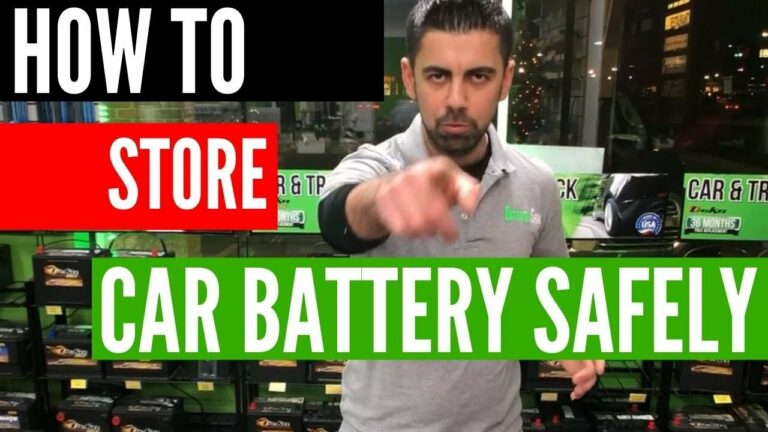How to Boost a Dead Car Battery?
Today we discuss How to Boost a Dead Car Battery. Having a dead car battery can be a frustrating experience, especially when you’re in a rush or far from help. But don’t worry, we’ve got you covered on how to boost a dead car battery.
In this article, we’ll walk you through simple steps to revive your vehicle and get back on the road in no time. So, if you’ve ever found yourself in a situation with a dead car battery, keep reading to learn the easiest and most effective ways to give it the boost it needs. Whether you’re a seasoned driver or a newbie, these tips will come in handy when you least expect it. Let’s dive in!
How to Boost a Dead Car Battery?
Dealing with a dead car battery can be a frustrating experience, especially when you’re in a hurry or stuck in an inconvenient location. However, with a little know-how, you can easily boost your dead car battery and get back on the road in no time. In this comprehensive guide, we will walk you through the step-by-step process of boosting a dead car battery, while also providing you with valuable tips and precautions to ensure a safe and successful jump-start.
Understand the Reasons for a Dead Car Battery:
Before jumping into the actual process of boosting a dead car battery, it’s important to understand the common reasons behind battery failure. This knowledge can help you prevent future occurrences and save your battery from early deterioration. Here are a few common causes for a dead car battery:
Leaving Lights On:
Leaving your headlights, interior lights, or other electrical components on for an extended period without the engine running can drain the battery and leave you with a dead vehicle.
Faulty Charging System
If your car’s alternator, voltage regulator, or other charging system components are malfunctioning, your battery may not receive the necessary charge, resulting in a dead battery.
Extreme Weather Conditions
Extreme cold or hot temperatures can affect a battery’s performance. In cold weather, the chemical reactions inside the battery slow down, reducing its capacity. In contrast, hot weather can accelerate the rate of battery fluid evaporation, leading to a shorter lifespan.
Gather the Necessary Tools
Before attempting to boost a dead car battery, make sure you have the following tools readily available:
Jumper Cables
Jumper cables are essential for connecting the dead battery to a live one. Ensure the cables are long enough to reach between the two vehicles comfortably.
Protective Gear
Wearing protective gear, such as gloves and safety glasses, is crucial to protect yourself from accidental sparks or battery acid splashes.
Portable Jump Starter
Investing in a portable jump starter is an excellent backup option, especially if you frequently find yourself in situations with a dead battery. These devices allow you to jump-start your vehicle without requiring another vehicle’s assistance.
Battery Charger
A battery charger can be used as an alternative to jump-starting if you have access to an electrical outlet nearby. It slowly charges the battery over time and eliminates the need for another vehicle.
Locate a Booster Vehicle
To jump-start your dead car battery, you will need a booster vehicle with a fully charged battery. If you don’t have access to one, consider asking a friend, family member, or neighbor for assistance. Alternatively, you can call a roadside assistance service.
Position the Vehicles
Once you have the booster vehicle ready, follow these steps to properly position the vehicles:
Turn off Ignition and Accessories
Ensure both vehicles are turned off completely, including all accessories such as headlights, radios, and air conditioning systems.
Identify Battery Terminals
Identify the positive (+) and negative (-) terminals on both batteries. These are usually labeled with a plus and minus sign or colored red (positive) and black (negative).
Park the Vehicles
Position the vehicles close enough so that the jumper cables can reach both batteries easily. However, ensure they are not touching each other.
Engage Parking Brakes
Engage the parking brakes on both vehicles to prevent any unexpected movement during the jump-start process.
Connect the Jumper Cables
Now that the vehicles are properly positioned, it’s time to connect the jumper cables:
Connect Positive Cable
Take one end of the jumper cable and attach it to the positive (+) terminal of the dead battery.
Connect Positive Cable to Booster Vehicle
Connect the other end of the positive jumper cable to the positive (+) terminal of the booster vehicle’s battery.
Connect Negative Cable
Attach one end of the negative (-) jumper cable to the negative terminal of the booster vehicle’s battery.
Connect Negative Cable to Grounded Point
Find an unpainted metal surface, such as a bolt or bracket, on the engine block or vehicle frame of the dead vehicle. Attach the other end of the negative jumper cable to this grounded point. Avoid connecting it to the negative terminal of the dead battery directly.
Start the Booster Vehicle
Before starting the dead vehicle, follow these steps to ensure a safe jump-start:
Verify Cable Connections
Double-check all the jumper cable connections to ensure they are secure and properly attached.
Start the Booster Vehicle
Start the booster vehicle and let it run for a few minutes, allowing its battery to transfer charge to the dead battery gradually.
Attempt to Start the Dead Vehicle
Try starting the dead vehicle. If it starts without any issues, proceed to the next step. If it doesn’t start, wait a few more minutes and try again.
Disconnect the Jumper Cables
Once the dead vehicle starts successfully, it’s time to remove the jumper cables:
Disconnect Negative Cable
Start with the negative (-) cable and remove it from the grounded point on the dead vehicle.
Disconnect Negative Cable from Booster Vehicle
Detach the negative (-) cable from the negative terminal of the booster vehicle’s battery.
Disconnect Positive Cable
Remove the positive (+) cable from the positive terminal of the booster vehicle’s battery.
Disconnect Positive Cable from Dead Vehicle
Finally, detach the positive (+) cable from the positive terminal of the dead battery.
Take Precautions and Avoid Common Mistakes
While jump-starting a dead car battery, it’s crucial to take certain precautions and avoid common mistakes to ensure your safety and prevent damage to the vehicles. Here are some important points to remember:
Read Manufacturer’s Instructions
Always refer to the vehicle and battery manufacturer’s instructions and recommendations before jump-starting a dead battery, as the process may vary for different vehicles.
Avoid Sparking
When connecting and disconnecting the jumper cables, ensure the clamps do not touch each other or any metal surface on the vehicles. This can cause sparking, which may result in injury or damage to the electrical systems.
Follow the Correct Order
Connect and disconnect the jumper cables in the correct order to avoid short circuits or damage to the electrical components. The usual order is: positive to positive, negative to grounded point, negative from grounded point, and finally, positive from positive.
Do Not Rev the Engine
Avoid revving the engine excessively while jump-starting, as it can damage the electrical systems of both vehicles.
Remove Jewelry and Accessories
To prevent accidental contact with the battery or jumper cables, remove any jewelry or metallic accessories from your hands and wrists.
Additional Tips for Maintaining a Healthy Battery
Prevention is always better than cure, and the same goes for your car battery. Here are a few additional tips to help you maintain a healthy battery:
Regularly Check Battery Connections
Inspect your battery regularly for any signs of corrosion or loose connections. Clean the terminals with a battery cleaning solution and tighten any loose connections to ensure optimal performance.
Avoid Short Trips
Frequent short trips may not fully charge your battery, leading to its premature failure. Whenever possible, take longer drives to allow the battery to recharge adequately.
Turn Off Electrical Components
When parking your vehicle, make it a habit to turn off all electrical components, including lights, fans, and radios, to prevent unnecessary battery drain.
Consider Battery Insulation
In extreme weather conditions, such as extreme cold or heat, consider using battery insulation blankets or thermal wraps to protect your battery and improve its performance.
Regularly Test Your Battery
Get your battery tested regularly, especially before long trips or during routine vehicle maintenance, to ensure it is in good working condition.
How to Jump Start Your Car
Frequently Asked Questions
How can I boost a dead car battery?
To boost a dead car battery, you can follow these steps:
What equipment do I need to boost a dead car battery?
To boost a dead car battery, you will need the following equipment:
What is the correct procedure for jump-starting a car?
The correct procedure for jump-starting a car is as follows:
Can I jump-start a car alone or do I need assistance?
While it is possible to jump-start a car alone, it is recommended to seek assistance, especially if it is your first time. Having someone present can provide an extra set of eyes and ensure the process is carried out safely.
How long should I let my car run after jump-starting the battery?
After jump-starting the battery, you should let your car run for at least 20 minutes. This will allow the alternator to charge the battery fully. It is also advisable to drive the car for a while to ensure the battery gets properly recharged.
What precautions should I take when jump-starting a dead car battery?
When jump-starting a dead car battery, it is important to take the following precautions:
Can a dead car battery be permanently damaged?
A dead car battery can be permanently damaged if it is not properly charged or if it has been completely drained multiple times. In such cases, it may need to be replaced. It is advisable to consult a professional if you suspect permanent damage to your car battery.
Final Thoughts
Boosting a dead car battery is a simple process that can save you from being stranded on the road. By following a few steps, you can quickly and safely recharge your battery and get your vehicle running again. First, ensure you have a set of jumper cables and a working vehicle. Connect the positive (+) terminals of both batteries, followed by the negative (-) terminals. Start the working vehicle, let it run for a few minutes, and then try starting your dead car. If successful, let it idle for a while to allow the battery to recharge. Remember, it’s essential to take precautions and seek professional assistance if needed. So, the next time you find yourself with a dead car battery, fear not – follow these steps to boost it back to life and hit the road again.





